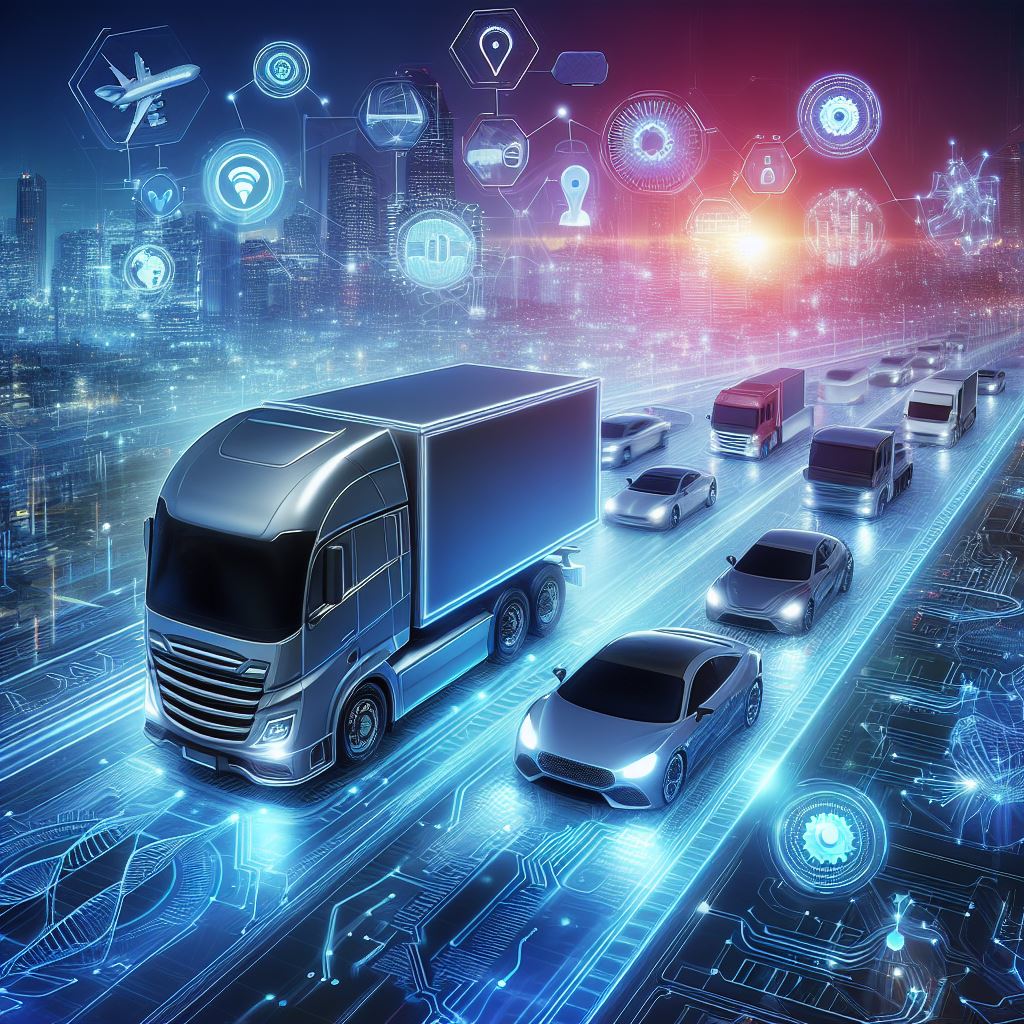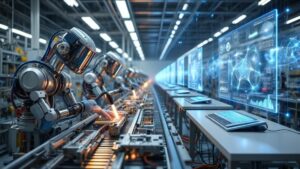AI for Transportation Planning and Scheduling
Transportation is the lifeblood of modern civilization. It connects people, goods, and services across the world, making our present-day lifestyle possible. However, with the passing of each day, the demands on our transportation systems have only intensified, prompting a need for more efficient planning and scheduling to alleviate the increasing pressure on infrastructure and resources.
Enter AI! We are no strangers to the transcendent capabilities of Artificial Intelligence and their ability to dramatically transform entire sectors. Well, the transportation industry is no different, in fact, AI has been playing an increasing role in this sector for a while now, with novel breakthroughs every day!
This article will shed some light on the most basic and widely adopted strategies throughout the transport industry to maximize the efficiency of planning and scheduling, opening the door to a more resourceful and sustainable future.
AI in Public Transit
Traditional public transport systems often struggle to effectively cater to the general population, with people facing long waits, crowded spaces, and inconsistent schedules. Here are a few ways in which AI is helping us elevate the standards of public transport.
Seattle Auto-adjusting Traffic Lights
Google AI has been analyzing maps, successfully processing data from daily traffic and congestion, and allowing transit systems to adjust traffic light timings accordingly. As a result, aside from drastically enhancing the city’s traffic, it’s also helped to significantly cut down greenhouse gas emissions.
Smarter Schedules in Singapore (Project Horizon)
The Land Transit Authority (LTA) has introduced a master plan known as Project Horizon, aiming to dynamically adjust bus schedules based on real-time passenger demand. Using sensors and cameras, the system detects passenger volume at bus stops and adjusts bus frequencies accordingly, reducing waiting times by up to 25%.
Demand-Responsive Public Transit in Helsinki
Whim, a popular app in Helsinki is widely used to commute. It combines a city’s transportation schedules and lets users decide what’s best for them to reach their destination. Its truly commendable effectiveness is evident by how smoothly it integrates data from various modalities like public transport, trains, shared and city bikes, e-scooters, taxis, shared or rental cars, and more.
In addition to this, other ways by which AI is helping us alleviate public transport include:
- Predicting maintenance needs for vehicles to avoid unnecessary breakdowns in the middle of the journey.
- Anticipate peak hours, allowing drivers to adjust routes and avoid congestion.
- Real-time updates to drivers about disruptions and delays.
- AI-powered security cameras are always on the lookout for safety breaches, with the ability to notify law enforcement bodies.
Logistics and Freight Management
The use of AI to optimize time and delivery can be traced back to the mid-2010s, signifying a decade-long development in the sector. Here’s how it’s been going:
Route Optimization: Taking into consideration factors like traffic and distance, AI can help reduce fuel consumption, bring down transportation costs, and deliver on time.
Analyzing and Forecasting Demands: With the computational power of AI, businesses can now accurately predict the traffic of their sales, and adjust inventories and resources accordingly. This prevents the system from becoming overburdened and allows business to flow smoothly.
Warehouse Automation: Since the 90s, robots have taken over menial warehousing tasks, significantly improving output, efficiency, and costs. With the advent of AI, they’ve gotten even more sophisticated and have only uplifted the standards.
Real-time shipment monitoring: Shipping companies like FedEx and UPS, provide customers with real-time updates on their shipment. Real-time tracking lets you see exactly where your shipment is, anytime, anywhere. No more wondering if it’s stuck in traffic or lost in the mail.
AI In Autonomous Vehicle
Tesla’s full autopiloting cars crashed headlines when they were first introduced in November 2016, and their popularity ever since has only risen. While they require a fully attentive driver to be present in the vehicle, the self-driving system performs admirably on the roads. If it wasn’t already obvious, autopilot and self-driving utilize highly sophisticated and advanced AI systems.
Other examples are Waymo and Apolong self-driving cars that aim to provide safe and easy commuting for people, as well as goods.
Note: While great precautionary measures have been taken to make driverless cars safe to navigate, there is still a lot of skepticism and hesitancy involved, and not all people might trust AI to drive them yet.
AI in Airline Scheduling
Airlines are soaring the skies with AI as their co-pilot, upgrading the quality of their services as well as their operations. Moreover, with the introduction of Smart Algorithms, airlines can successfully optimize flight paths by dodging bad weather. This helps cut down fuel consumption. Furthermore, these algorithms can aid in the diagnosis and identification of aircraft maintenance requirements, ensuring that they remain in peak operating condition.
Skywise — AI Initiative on Airbus
One of many projects undertaken by Airbus that intends to incorporate artificial intelligence in aircraft to upgrade their services and facilities, Skywise ingests and analyzes vast amounts of data from various sources, including flight schedules, weather patterns, historical flight data, and real-time operational information. The objectives of this project are:
- Predictive Analysis: Identify potential causes for disruptions and delays in a flight based on countless parameters like weather, disasters, and geopolitical mishaps.
- Optimize Flight Schedules: Generate innumerable potential schedules based on factors like crew and crafts availability, and passenger demand. Then choose the best one.
- Crew and Pilot Scheduling: Analyze patterns and daily flight data to ensure even distribution of working hours for the crew; helping to reduce overburdening a part of their crew.
- Fuel Efficiency: Decrease emissions and fuel consumption with optimal routes, avoiding winds that create drag (when air is blowing against the aircraft, its fuel consumption is significantly increased).
- Passenger Experience: Regularly updating customers about their flight schedule, and personalized questions relating to their flights and destination, can help build trust, and chances of rebooking in the future.
AI in Railway Systems
Trains are chugging onto the AI fast track! Smart algorithms predict equipment failures, preventing breakdowns and delays. Equipped with cameras with eagle eyes, can scan tracks for obstacles, ensuring safer journeys. Additionally, AI optimizes schedules, whisking passengers to their destinations faster and smoother. But what’s most exciting is that the future holds even brighter tracks: AI could navigate trains autonomously, personalize passenger experiences, and even power energy-efficient systems, making rail travel the greenest choice on the road to tomorrow.
SNCF and Thales Autonomous Trains in France
SNCF, a French national railway operator, has partnered with Thales, to integrate AI and has been examining the technology on test tracks. This rigorous testing regimen will allow it to attain safety certifications, for confidence building in the general public. These trains are equipped with sensors and cameras which the AI can use to pilot the train without a driver, but which is remotely monitored by the control centers, which can intervene whenever necessary. Aside from self-piloting, the project is set to improve customer services with data collection on passenger behaviors and infrastructure conditions to provide the best service possible. This also implies that with greater public participation, it will produce consistent results. Overall, its main goal is to
significantly reduce unplanned downtime, leading to increased operational efficiency and improved punctuality.
Hitachi’s AI-powered Station Management System in Japan
This railway system in the Japanese city of Hitachi is one of the first railway systems to incorporate Artificial Intelligence successfully with prominent results. The AI actively monitors passenger flow, train arrivals and departures, platform occupancy, and equipment status to maximize operations, reducing delays and providing a more predictable experience.
The AI can make announcements and inform passengers about the schedule, delays, and train arrivals/departures, as well as monitor station premises for any security concerns. Other features include Energy efficiency and Data-driven decision-making (like allocating resources).
AI in Delivery Services
Perhaps the greatest change AI has made in any transportation sector is within the delivery services. Before the advent of Artificial Intelligence and the high error rate of human brains, it was not a surprise if your parcel got delayed, or worse, lost! But no more! We’ve seen great improvements with delivery services, like:
- Live shipment tracking
- Chatbots and Virtual Assistance
- Route Optimization
- Automated Scheduling and ETA (Estimated Time of Arrival)
- Predictive Analytics
However, with the advancement in technologies we’re observing, the time when your package gets delivered to you by a robot isn’t far.
Wing Drone Delivery Service in Australia
Wing, a subsidiary of Alphabet (the Parent company of Google), has been pioneering drone delivery in selected locations in Australia since 2019. Customers can simply place orders using Wing App, or the websites of participating businesses. Once the items are safely packaged, the drone will automatically pick up the package from designated pick-up points. The drones are fixed with navigating systems and sensors that help them to reach the delivery point (they fly through predetermined routes) where they safely drop the parcel.
This lets customers prevent delays due to traffic or human error, and actively monitor the status of their parcel without needing to constantly call the company for updates. Not to mention it’s a better alternative for customers who care about emissions, since it has a relatively lower carbon footprint.
Amazon Scout Delivery Robots
Robots powered by electricity, traveling at the speed of 6 miles per hour, using cameras and sensors to navigate traffic and surroundings, were first introduced in 2019 as a delivery system in Seattle. (It has since expanded to various other states)
Unlike the traditional delivery system, your parcel doesn’t need to go through a post office and distribution center and can be directly delivered to your house. In fact, since they can function 24/7, they are not hindered by holidays or weekends, the customers can schedule delivery over the weekends.
AI in Emergency Services
When compared to emergency services, artificial intelligence has had no greater impact. Not only has it allowed us to have better medical equipment, but also with disaster management, delivering emergency services, and rescue missions. Here’s a brief overview:
Predicting and Preparing for Disaster: With the help of the computational powers of Artificial Intelligence, scientists can successfully predict the trajectory of natural disasters like flooding, tsunamis, and cyclones. This allows people to schedule and plan their destinations (avoiding areas hit by calamities), and governments to transport resources from other parts of the country to allocate them where they are needed.
Emergency Response: During an emergency, every second counts, and this is where AI can help us optimize ambulance dispatch and identify the best-suited first responders according to the situation.
Conclusion: AI for A Safer, Greener Future
Our transportation systems are evolving thanks to artificial intelligence. Public transit is getting smarter, logistics smoother, and flights greener. From predicting disasters to delivering packages by drone, AI is paving the way for a future where getting around is not only easier but also kinder to the planet.
Stop dreaming, start achieving. Explore the services offered by RTS Labs for actionable strategies for turning concepts into reality with expert software and data solutions. Learn, build, grow.






